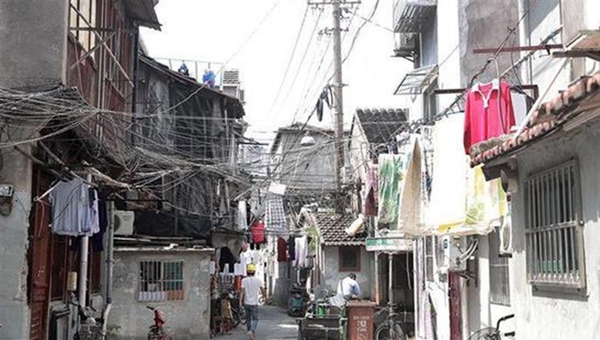
HUANGPU District has launched a new round of renovations of old residential communities, the district chief said yesterday.
Residents will be relocated during the work.
The second phase of renovations has started on about 250,000 square meters of residential buildings in one of the city’s last remaining major old communities in the Xiaodongmen (Little East Gate) and Laoximen (Old West Gate) areas, said Gao Yun, director of Huangpu.
Some minor renovations will be carried out on another 2 million square meters across Huangpu, Gao said in a radio interview.
Residents in Lane 404 Fuxing Road E., a traditional Shanghai lane community, have started moving out. The 157 households in houses built in the 1960s are still using shared kitchens and have no toilets. There are also more than 200 illegal structures.
The renovations will turn the former public areas into small but separate kitchens and toilets for each household. Gas pipes will also be connected to the kitchens.
Residents are due to move back in October 2018, although the renovations are scheduled to be finished by July. Residents will receive an allowance of 3,500 yuan (US$518.7) a month to rent alternative accommodation.
Previously, residents remained during renovations, but the government has decided the process works better if they move out, Gao said.
The downtown district launched the renovation program last year for the Jukui Community, an old community near the Bund.
About 287 households moved out in March to rented apartments — a first practice for the city — with subsidies from the district government.
An official overseeing the renovation work said more than 400 illegal structures had been demolished, including 66 dangerous “arcade houses” which were supported by steel pillars.
They were built by residents desperate for extra space and better living conditions.
The 10 brick and wood buildings, which were built in the early 1960s, were in dangerous shape. They have been refitted with new roofs and concrete foundations. The renovation also included adding separate bathrooms and kitchens. Residents were moved back before this year’s Spring Festival.
